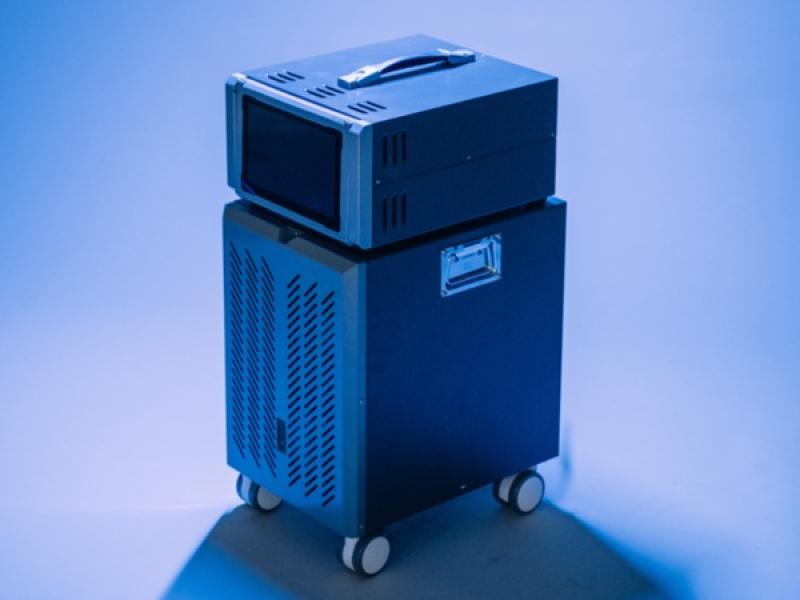
Allied Properties Real Estate Investment Trust (APYRF) says in its 2022 ESG Report the trust has outperformed environmental performance targets, executed the first steps of its net-zero plan, and intends to certify most of its portfolio with LEED and/or BOMA by 2028.
As of the end of 2022, the Toronto-based REIT held 13.1 million square feet of office space and 1.3 million square feet of retail space, with 199 properties in seven Canadian cities. Its portfolio stood at $8.3 billion of gross asset value.
Allied’s 2022 ESG report summarizes progress on sustainability, driven by:
- remaining below greenhouse gas emissions intensity and energy use intensity targets even as occupancy rates increased;
- work on its Net Zero Carbon Plan;
- and a plan to certify 70 per cent of its portfolio with BOMA and/or LEED by 2028, compared to 27 per cent currently.
“We are continuing to outperform our 2024 goals which is a good indication that we are progressing well. And of course we are in the process of building our Net Zero Carbon Plan in alignment with the Science Based Targets initiative,” Jo Flatt, Allied’s vice-president of corporate planning and sustainability, told SustainableBiz.
Allied’s 2022 emissions
Allied reports its target portfolio in 2022 emitted 29,953 tonnes of carbon dioxide equivalent (tCO2e) in absolute emissions, compared to 29,596 tCO2e in 2021 and a 2019 baseline of 33,805 tCO2e. Its target is 31,632 tCO2e in 2024, which means Allied in 2022 was 5.6 per cent below its absolute emissions target.
Across its standing portfolio, Allied’s properties in 2022 emitted 49,585 tCO2e of absolute emissions, compared to 45,323 tCO2e in 2021 and 43,882 tCO2e in 2019. Flatt said this was primarily due to new developments and acquisitions.
Its reported portfolio emissions cover Scope 1 and 2 – operational emissions. Flatt said Allied’s figures for 2022 are less affected by the COVID pandemic’s impact on real estate compared to 2020 and 2021.
Flatt said the real estate industry prefers to measure greenhouse gas emissions by intensity, as portfolio changes like acquisitions can alter its absolute emissions. Allied acquired almost one million square feet of buildings between 2021 and 2022.
In its 2022 target portfolio, Allied emitted 2.21 kilograms of carbon dioxide equivalent per square foot (kgCO2e/ft2). It is higher than its 2021 figure of 2.18 kgCO2e/ft2, but lower than its 2019 baseline of 2.49 kgCO2e/ft2 and its 2024 target of 2.33 kgCO2e/ft2.
Allied does not yet have a clear picture of its Scope 3 emissions, which Flatt said the REIT is addressing.
“We’ll be getting there over the next year to do our calculation and get aligned with the Science Based Targets initiative.”
How it achieved its reductions
Allied made its emissions and energy use intensity reductions by focusing on data collection, tools and systems, audits and retrofits, education and engagement, according to the report.
Those efforts include:
- creating a quarterly environmental sustainability dashboard to regularly review, identify and correct performance deviation and deficiencies;
- completing lighting retrofits covering over 2.2 million square feet in 2022; and
- starting replacements of end-of-life fossil fuel-based equipment to reduce operational carbon up to 95 per cent;
Net Zero Carbon Plan
In 2022, Allied also advanced its Net Zero Carbon Plan, which will align with the Science Based Targets initiative.
A linchpin of the plan is the internal shadow price of carbon set last year. Essentially an internal carbon price, Allied calculates the predicted impact of every tonne of carbon emissions on the company. Carbon pricing laws, the increases to the cost of debt and the social cost of carbon are some examples that would contribute to the internal carbon price.
This helps the company better quantify transition risk.
The shadow price of carbon will be reviewed each year so it is adjusting to the market, economic demands and government policies.
The plan also requires all future ground-up developments to include life-cycle analyses to assess the feasibility of net-zero, quantifying Scope 3 emissions and embodied carbon; refining and optimizing its deep carbon retrofit concept-design; and holding educational workshops.
A significant portion of Allied’s portfolios is in heritage buildings, Flatt said, so the plan will focus on electrification and other measures to move them toward net-zero carbon.
Rapidly accelerating its certified real estate
To meet its sustainable design standards, Allied is pursuing LEED v4 BD+C Gold certification at minimum for all ground-up developments and assessing the feasibility of LEED v4 BD+C Platinum and CaGBC Zero Carbon Building-Design certification.
In an ambitious goal, Allied has set out to certify 70 per cent of its standing portfolio, or 8.1 million square feet, to LEED O&M and/or BOMA by 2028. Allied has already certified 27 per cent of its portfolio under those two standards.
“Our hope is to do as much LEED as we can,” Flatt said. Allied’s team will work to do a “deep dive” on its current portfolio to uncover the difficulties it might face with some of its buildings, so executing the certifications can go much faster.
“OK, let’s do the due diligence, understand what it’s going to take and how much it’s going to cost and how quickly we can do it, so that when we actually articulate our goal in order to get to our target, we know that we can get to them and they actually have substance behind them,” Flatt continued.
Allied did not disclose the cost of the 2028 certification goal.
Other achievements
- Reaching 21.5 equivalent of kilowatt-hours per square foot (ekWh/ft2) in 2022, which is higher than 2021’s 20.9 ekWh/ft2 but beats its 22.6 ekWh/ft2 target.
- Creating a physical climate risk assessment framework so “our buildings are ready for a changing climate,” according to Flatt.
- Piloting a new waste management approach for a construction project in Calgary, which diverted 73 per cent of construction waste from landfill.










